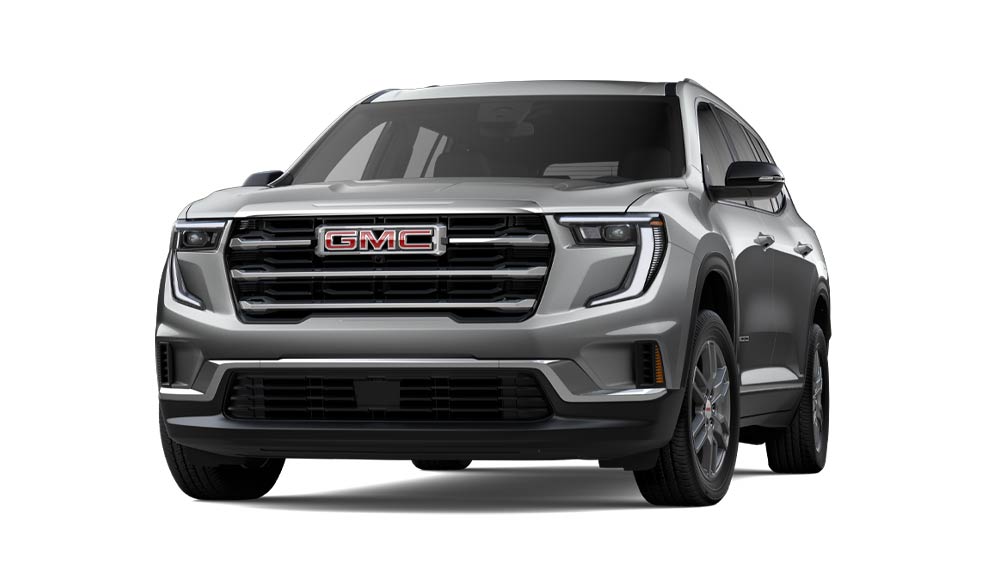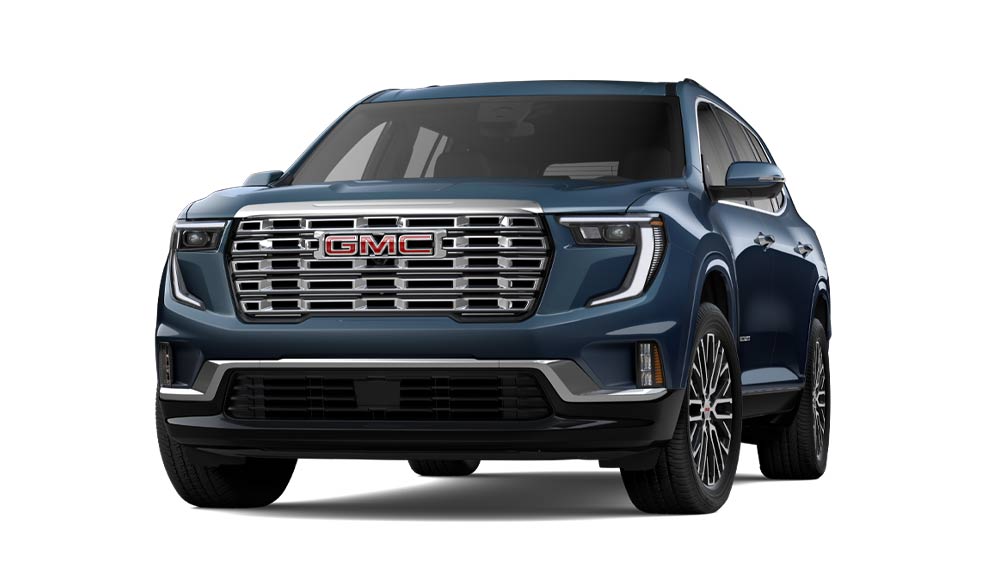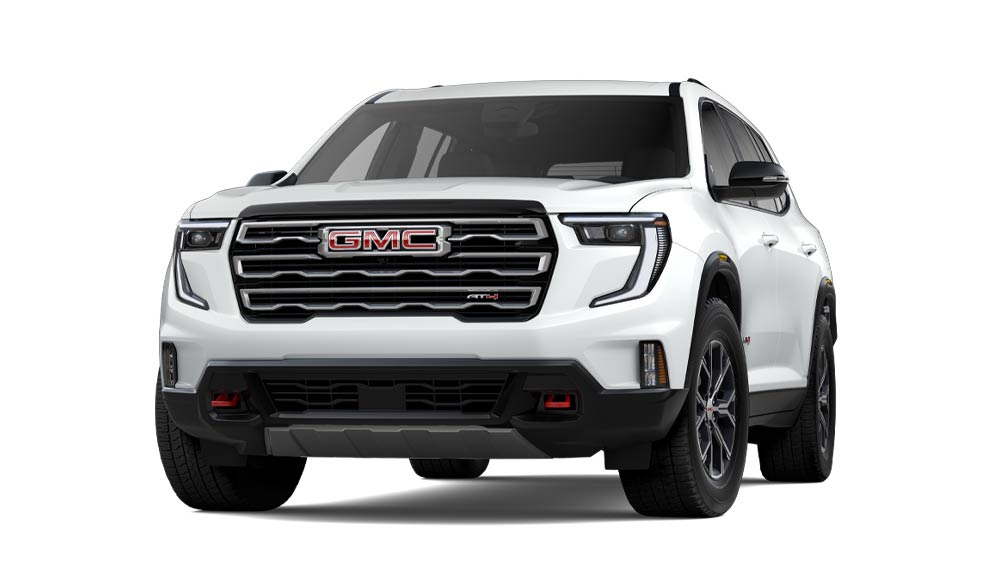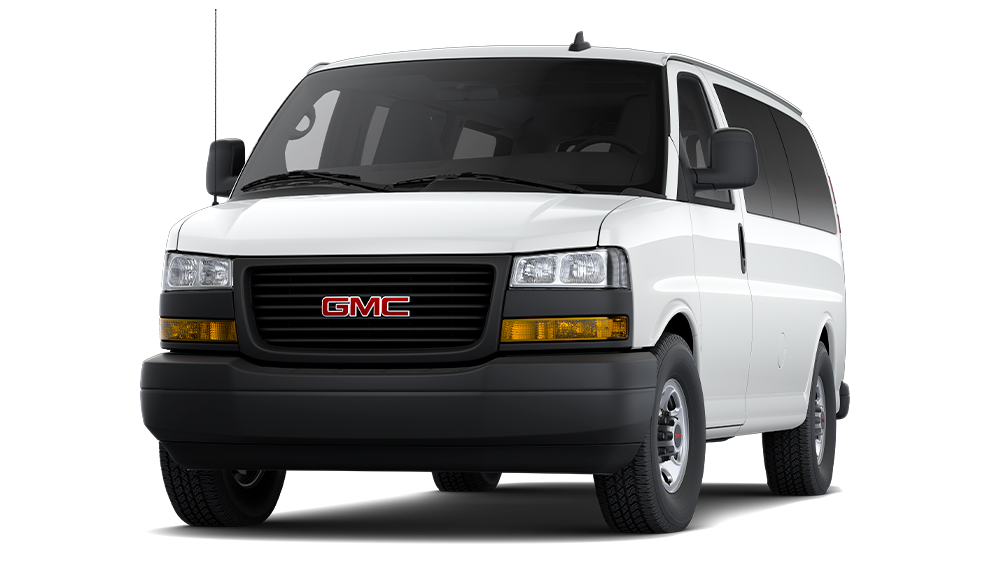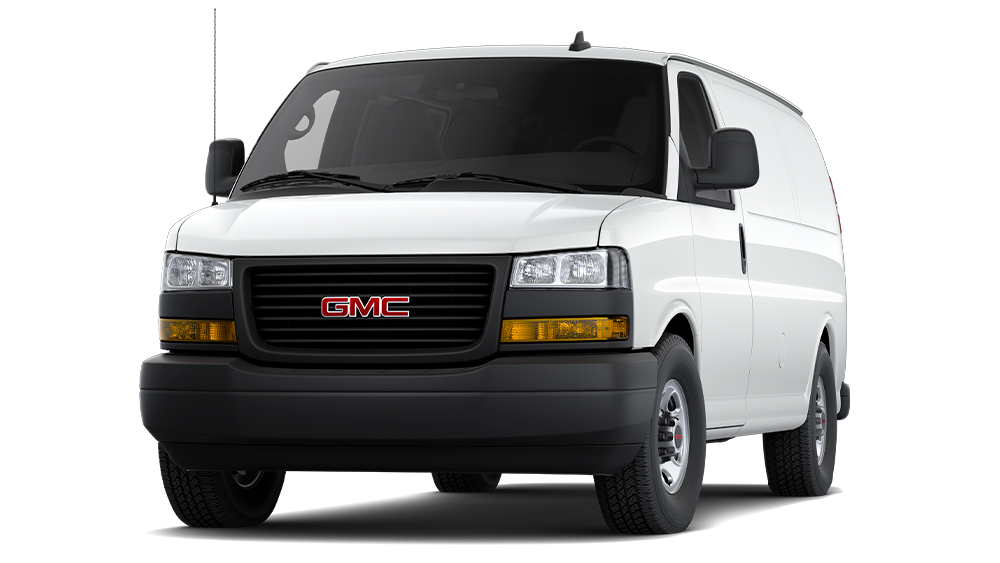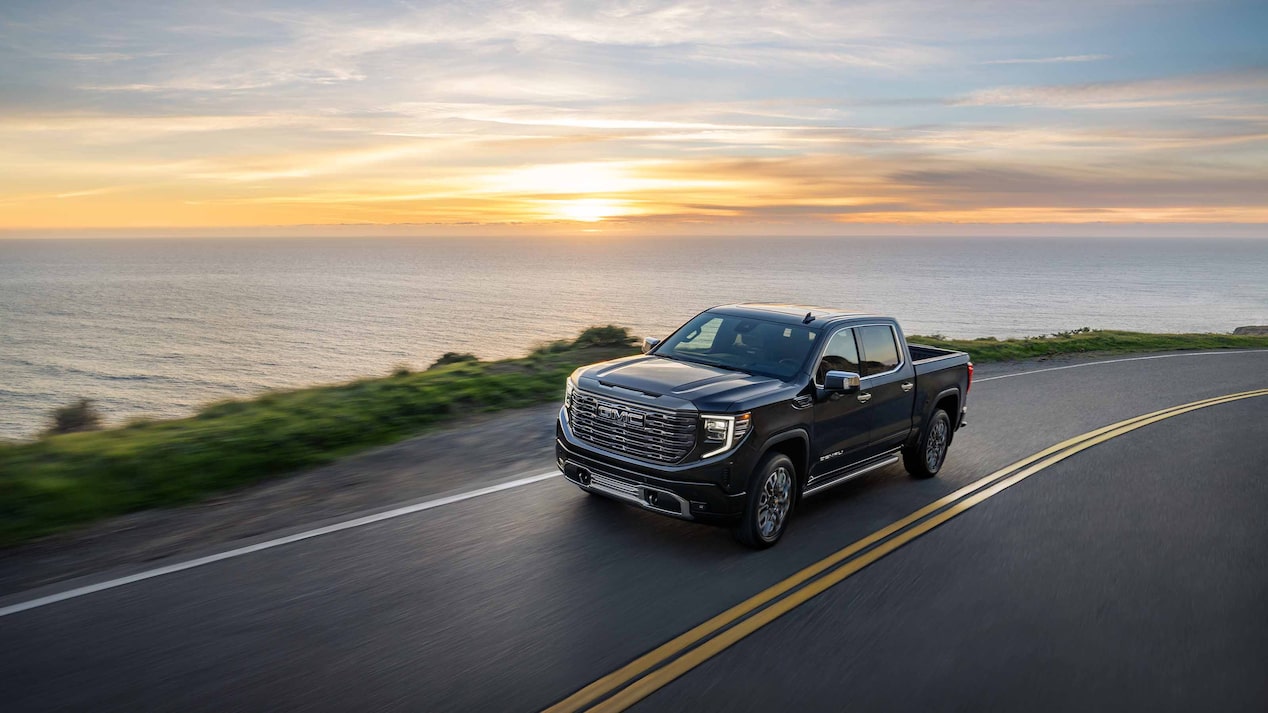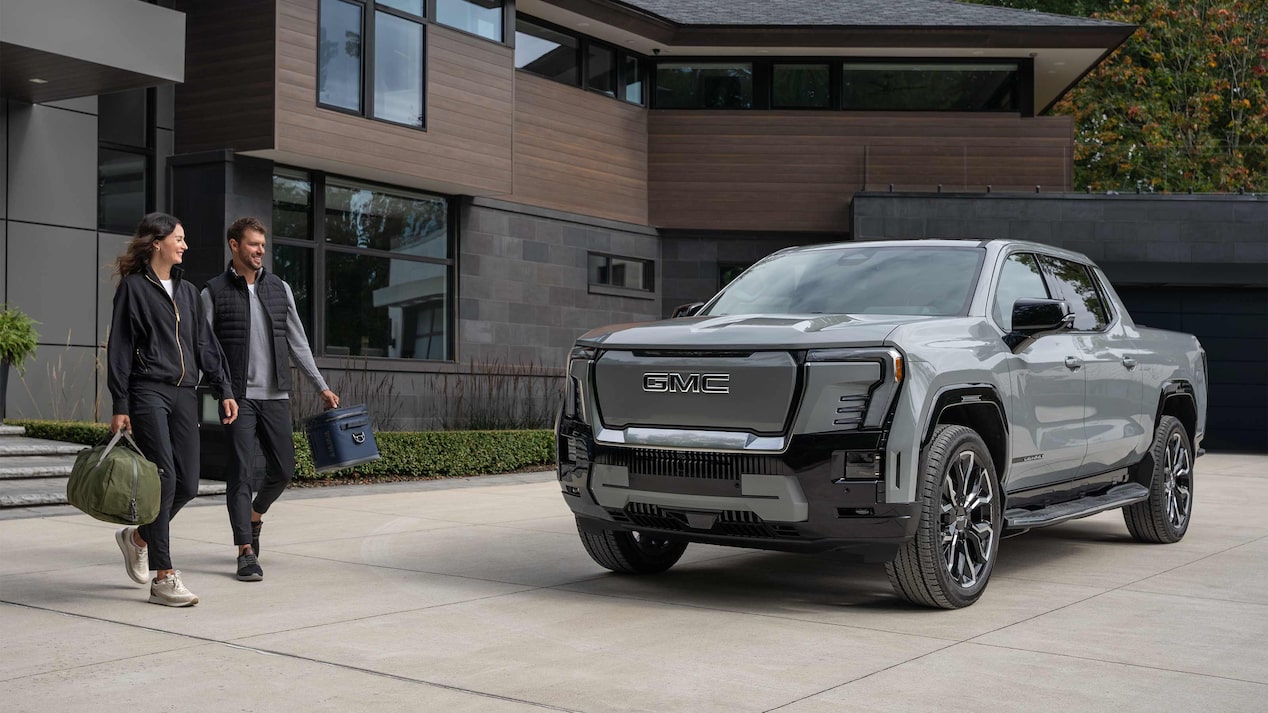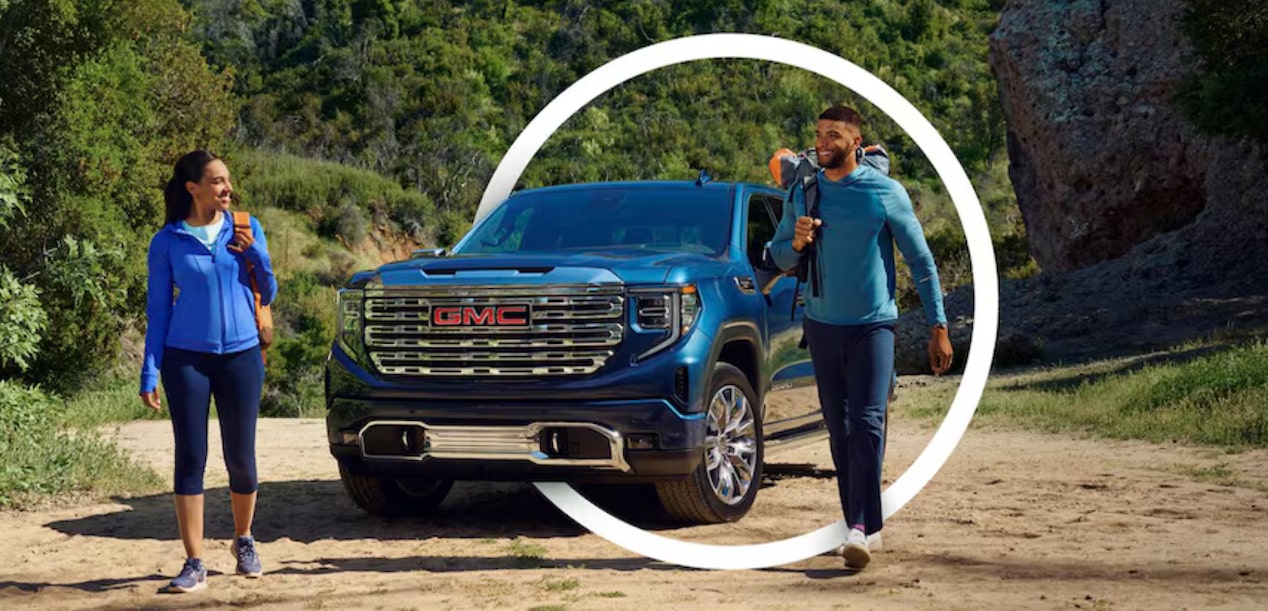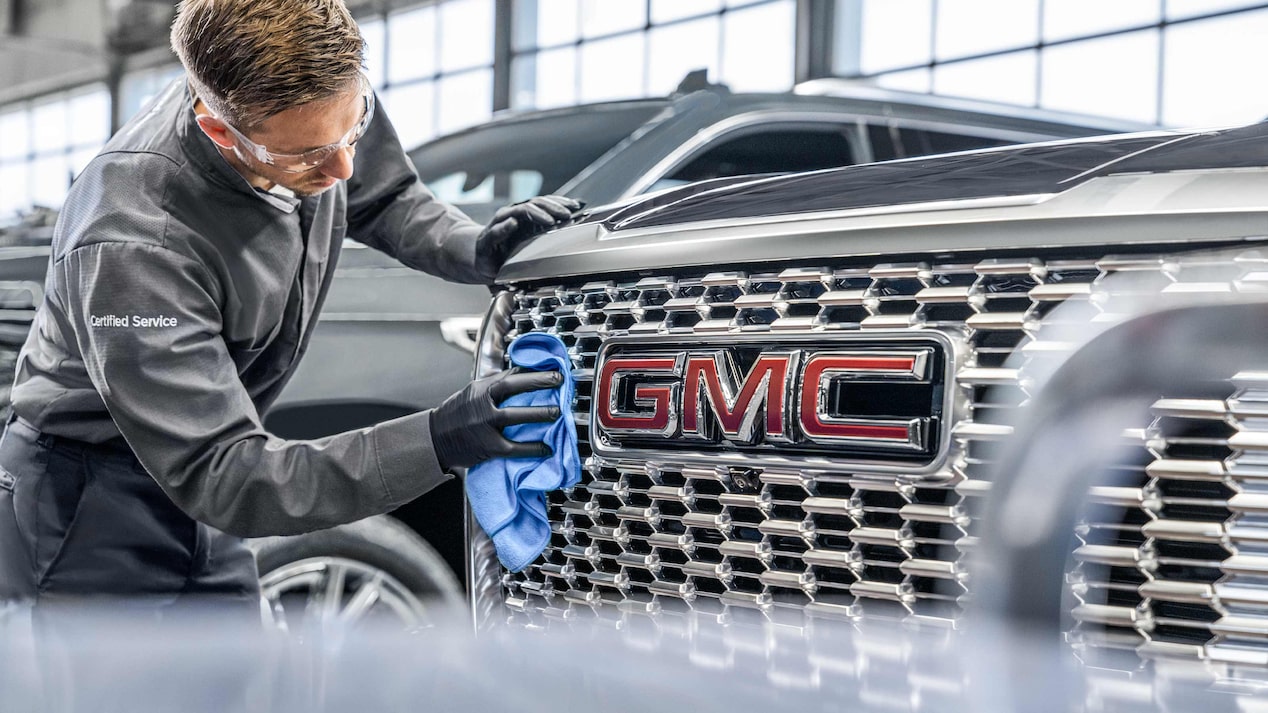GMC LIFE
Trailers aren’t one-size-fits-all. In fact their varying designs and configurations mean they can handle quite differently when hitched to your tow vehicle.

Not all trailers are created equal. In fact, variations in trailer shape, size, weight, hitch, and so on can drastically impact how it behaves on the road, and how it impacts the handling of your tow vehicle. Knowing what sort of trailer you plan on towing not only allows you to find a vehicle and hitch appropriate for your needs, but to also anticipate how to safely tow a trailer with an SUV or pickup truck.
Conventional Trailers
While typically used to describe recreational trailers, like campers or boat trailers, conventional trailers generally utilize a ball-type hitch. For super-light trailers, this ball may be mounted on a step bumper, but in most instances, the ball is mounted to a drawbar receiver, which is bolted to or integrated into the vehicle’s chassis.
Utility Trailers
Although many utility trailers can be considered conventional because of their ball-type hitches, the design and construction of these trailers can be quite different from conventional trailers – as can their handling. Designed to move cargo, equipment, or other belongings, these trailers are often smaller and lighter than conventional trailers. As a result, less weight is placed over the trailer hitch and tongue, which can make handling tricky. Drivers should take care to attach safety chains correctly underneath the trailer tongue, and avoid sharp turns. As always, utility trailers should be front-heavy when loaded in order to increase stability.
Gooseneck Trailers
Named for their long, tall trailer tongues, which rise up and extend into the pickup beds, gooseneck trailers are typically larger and capable of carrying heavier loads. Gooseneck hitches consist of a hitch ball mounted in the middle of the pickup bed, which the trailer neck couples to. By placing the hitch here, the tongue weight of the trailer is placed over the rear axle instead of at the end of the vehicle, which improves handling. Gooseneck trailers allow sharper corners to be taken at low speeds, aiding maneuverability, but drivers must be careful to avoid jackknifing, along with interference between the trailer and the back of the pickup cab or top of the pickup box sides.
Fifth-Wheel Trailers
Like gooseneck trailers, fifth wheel trailers feature a couple mounted within the pickup bed, and are designed to carry heavy loads. However, a fifth wheel trailer’s hitch coupling is quite different than a gooseneck trailer. Much like what you’d find on a semi truck, a greased, horseshoe shaped plate – essentially the “fifth wheel” – is mounted within the bed. A kingpin on the trailer slides into a groove on the plate and locks in place, allowing the trailer to rotate upon the plate.
RELATED STORIES
TRUCKS
TAKE COMMAND OF YOUR RV’S SMART HOME FEATURES WITH SMART TRAILER FROM GMC SIERRA

GMC vehicles are renowned for not only their great towing capability but
advanced technologies. This includes the innovative Smart Trailer for
select GMC vehicles. Using either the
TRUCKS
BUILT FOR TOWING: SIERRA HEAVY DUTY’S GOOSENECK / FIFTH-WHEEL PREP PACKAGE

From a strong, custom-designed hitch platform to a professional-grade installation backed by a limited factory warranty, Sierra Heavy Duty’s Gooseneck/ Fifth-Wheel Prep Package is a valuable asset for those who tow gooseneck and fifth-wheel trailers.
TRUCKS
HOW TO SET UP AND USE TRANSPARENT TRAILER ON GMC PICKUP TRUCKS

The GMC Sierra Heavy Duty and Sierra 1500 are designed and built to feature excellent power and advanced technology to help give confidence and ease with towing. One of these features is the available transparent trailer view. One of the class-leading available up to 15 camera









